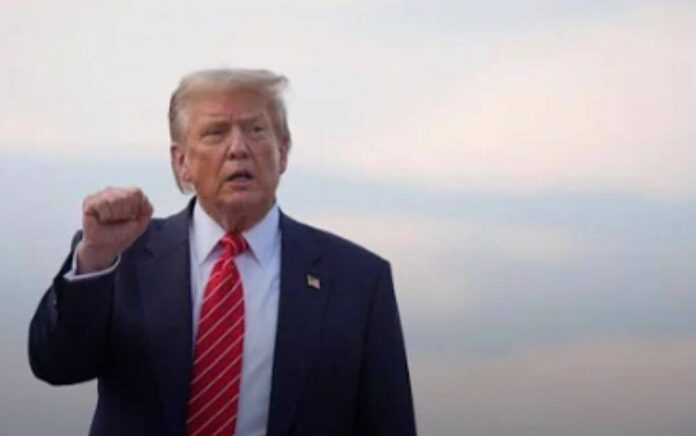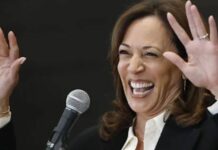
Anyone negotiating with Donald Trump should take him at his word. What he says he’s going to do, he will do it.
That’s why President Trump’s just slapped three countries with a huge new tariffs for trying to call his bluff.
Trump Administration’s Tariff Strategy and Trade Negotiations
On Wednesday, President Donald Trump revealed a new set of tariffs targeting six countries to address trade imbalances. Starting August 1, imports from Algeria, Iraq, and Libya will face a 30% tariff, Brunei and Moldova will see a 25% duty, and the Philippines will be subject to a 20% levy, as announced on Trump’s Truth Social platform. This follows Monday’s decision to impose 25% tariffs on Japan and South Korea.
In nearly identical letters to the leaders of these nations, Trump stated, “If you open your markets to American goods and remove your tariff and non-tariff barriers, we may adjust these rates. The tariffs could increase or decrease based on our trade relationship.” The letters highlight the administration’s push for fair and open trade.
Initially, the Trump administration set a July 9 deadline for countries to finalize trade deals with the U.S., threatening higher tariffs for those that failed to comply. This deadline has been extended to August 1, allowing more time for negotiations. Since taking office in January, Trump has pursued an assertive trade policy to counter practices he believes harm the U.S. economy. On April 2, he introduced widespread “Liberation Day” tariffs, which were later reduced to a 10% baseline rate on April 9 for a 90-day negotiation period.
The tariffs announced today for the six nations are consistent with those proposed in April. On Sunday, Trump also warned that countries aligning with the BRICS coalition—China, Russia, India, and others—could face an additional 10% tariff for policies he considers detrimental to U.S. interests. The administration has already secured trade agreements with the U.K., Vietnam, and a temporary deal with China.
Trump’s Tariff Strategy of Leverage for Favorable Trade Deals
The Trump administration has adopted a strategic and assertive tariff policy to reshape global trade in favor of the United States. By using tariffs as a negotiating tool, the administration aims to secure more equitable trade terms, addressing long-standing imbalances that have disadvantaged American businesses.
The recent tariff announcements targeting Algeria, Iraq, Libya, Brunei, Moldova, and the Philippines demonstrate a nuanced strategy. The graduated tariff rates—30% for Algeria, Iraq, and Libya; 25% for Brunei and Moldova; and 20% for the Philippines—suggest a tailored approach based on each nation’s trade practices and economic ties with the U.S. The August 1 effective date provides a window for these countries to negotiate, showcasing the administration’s pragmatic use of tariffs as leverage.
These nations, significant suppliers to the U.S., are now under pressure to revise trade terms to mitigate the economic impact of the duties. The extension of the negotiation deadline from July 9 to August 1 demonstrates a balanced approach, combining firmness with an opportunity for dialogue, which could lead to mutually beneficial agreements.
The “Liberation Day” tariffs, announced on April 2, marked a bold initial step, targeting nearly all trading partners with rates based on trade deficits. The subsequent reduction to a 10% baseline rate on April 9 was a strategic move to stabilize markets while maintaining pressure on negotiations. This approach has already borne fruit, with trade deals secured with the U.K. and Vietnam, and a provisional agreement with China, highlighting the administration’s ability to achieve tangible results.
Trump’s warning of an additional 10% tariff on BRICS-aligned nations hints at a critical strategy. By targeting countries associated with this coalition, the administration aims to counter economic policies that could undermine U.S. interests, encouraging nations to prioritize bilateral trade deals with America. This move strengthens the U.S. position in global trade negotiations and promotes economic alignment with American priorities.
The administration’s tariff strategy is carefully calibrated to address specific trade imbalances. For example, the U.S. ran a $4.9 billion trade deficit with the Philippines and a $5.9 billion deficit with Iraq in 2024, which may explain the varying tariff rates. By tailoring duties to each country’s trade profile, the administration demonstrates a sophisticated understanding of global economic dynamics, aiming to maximize leverage while minimizing disruption.
Critics of the tariff policy argue that it could increase costs for American consumers and strain international relations. However, the Trump administration maintains that these measures are essential to protect domestic industries and ensure fair competition. The successful trade agreements with the U.K. and Vietnam suggest that the administration’s approach can lead to outcomes that benefit American workers and businesses while fostering stronger trade relationships.
By targeting smaller trading partners like Brunei and Moldova, alongside larger economies, the administration shows a comprehensive approach to trade reform. Despite their modest trade deficits—$111 million for Brunei and $85 million for Moldova—these nations are included in the tariff strategy, indicating a thorough effort to address imbalances at all levels. This attention to detail strengthens the administration’s credibility in pursuing equitable trade globally.
The extension of the tariff deadline to August 1 indicates confidence in the administration’s negotiating power. This additional time has already facilitated progress, as seen in the temporary deal with China, which could serve as a model for future agreements. The administration’s willingness to adjust tariffs based on negotiation outcomes demonstrates a commitment to achieving long-term economic goals through flexibility and strength.
Trump’s direct communication style, particularly through Truth Social, enhances the effectiveness of his tariff strategy. By publicly announcing tariff rates and deadlines, he maintains transparency and keeps the pressure on foreign leaders to act promptly. This approach ensures that global trade discussions remain focused on U.S. priorities, reinforcing America’s leadership in international commerce.
The administration’s emphasis on reciprocal trade aligns with a vision of economic sovereignty. By addressing both tariff and non-tariff barriers, Trump seeks to create a level playing field for American businesses, fostering economic growth and job creation. The tariff letters sent to the six nations encourage open markets and fair practices, offering a clear path to reduced duties through cooperation.
The Trump administration’s tariff policy has sparked a global conversation about trade fairness, with many nations now reevaluating their economic strategies. The successful negotiations with the U.K. and Vietnam demonstrate that tariffs can serve as an effective catalyst for change, encouraging countries to align with U.S. interests. This approach positions the administration as a proactive force in global trade, capable of delivering results that strengthen the American economy.
The administration’s ability to secure a temporary agreement with China, a major global player, highlights the potential for significant breakthroughs. As negotiations continue, the prospect of further deals with countries like Japan and South Korea could reshape trade dynamics in Asia and beyond, benefiting U.S. industries and consumers. The administration’s strategic use of tariffs is paving the way for a more balanced and prosperous global trade environment.



















